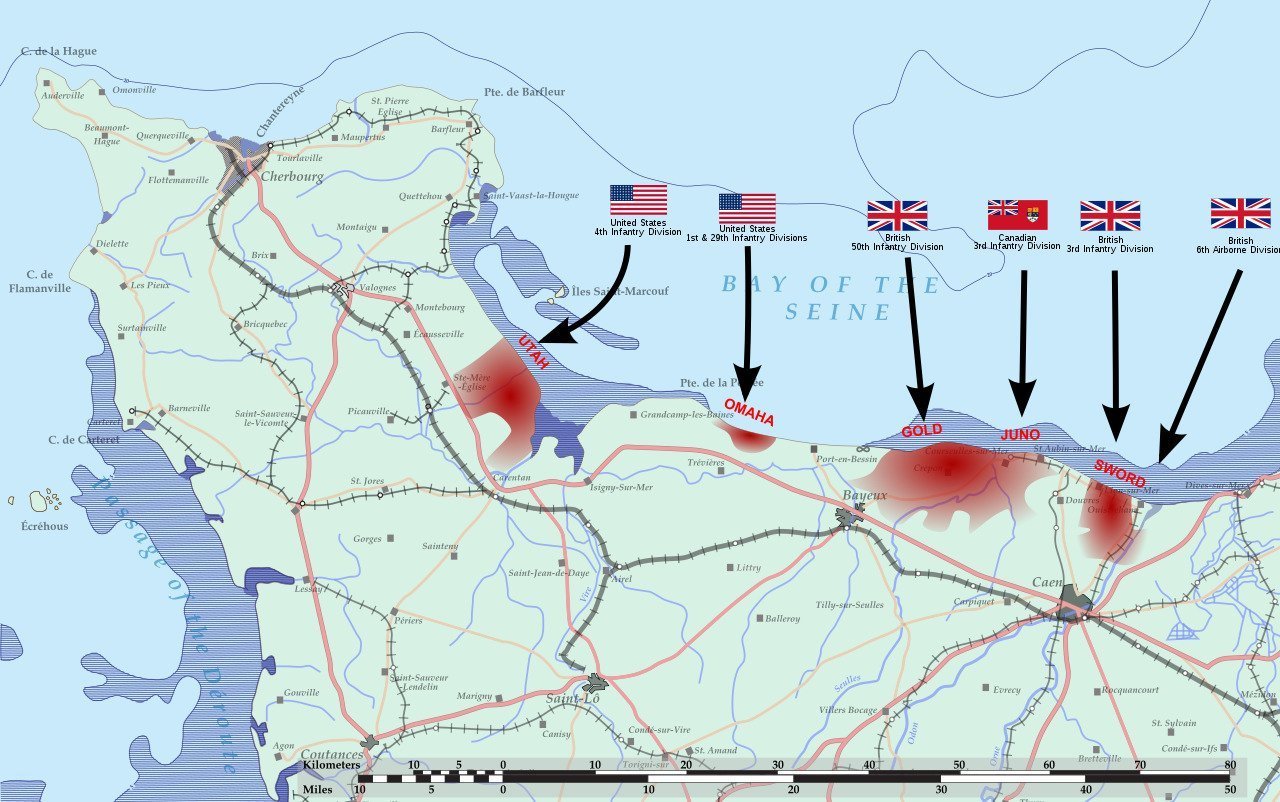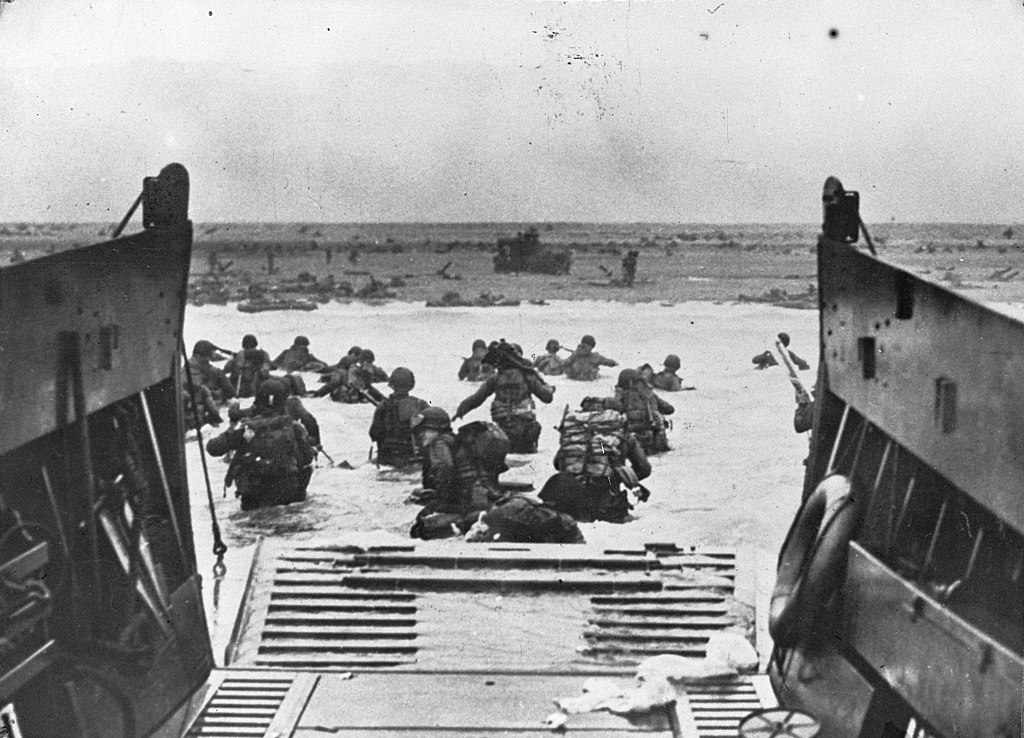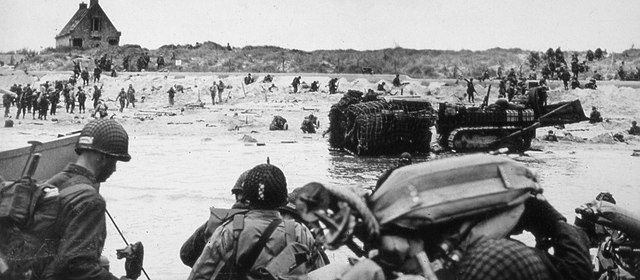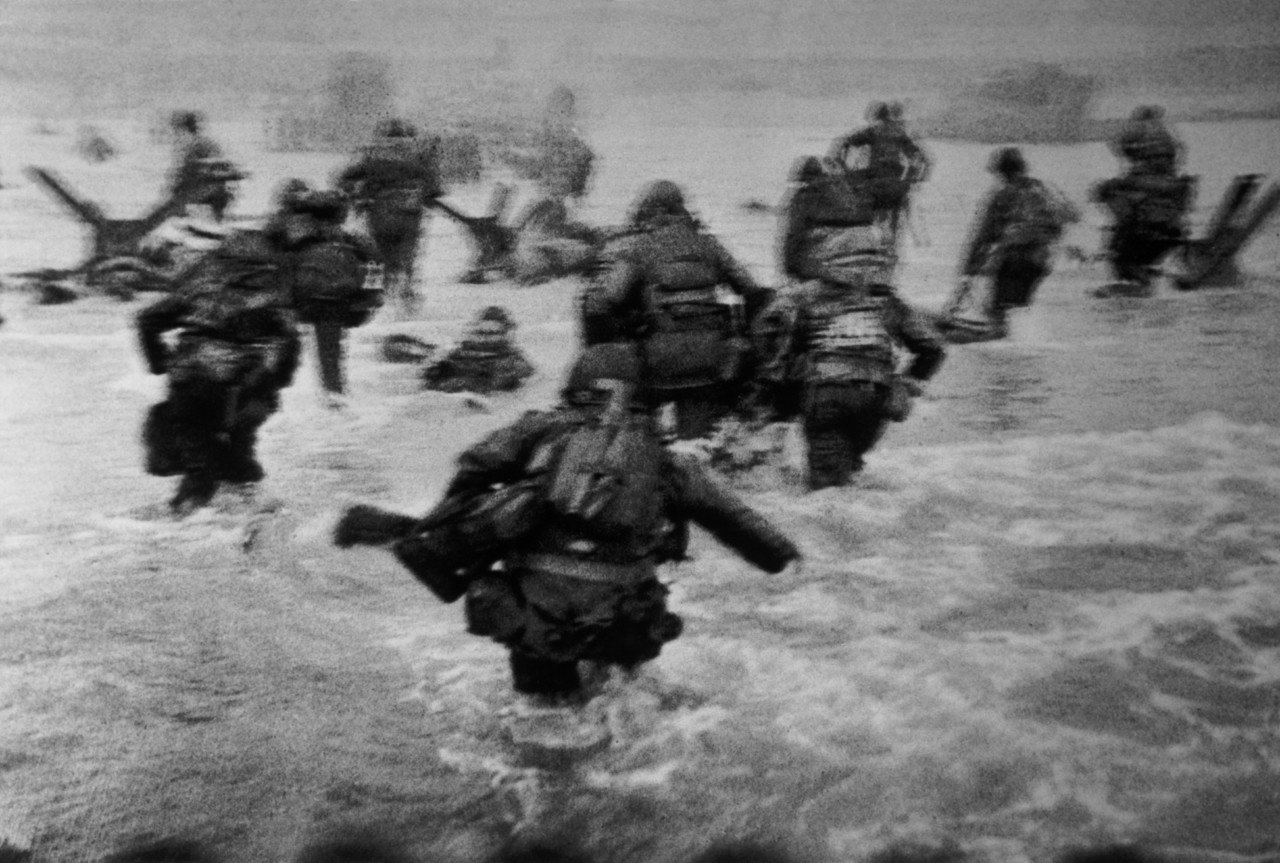Primo Victoria
It was a few minutes after midnight on June 6, 1944. A couple of British gliders silently touched down in Normandy near the Caen Canal. Moments later, all hell broke loose. Shouting, the British commandos dashed towards the bridge, overwhelming the confused defenders with hand-grenades and submachine guns. In minutes, Benouville Bridge, codenamed Pegasus, had been taken. The first phase of Operation Neptune had begun.
Phase one
Neptune, which formed part of Operation Overlord, was designed to storm the German defences on the French coast and establish a beachhead to strike further into Normandy. A massive amphibious landing was to be undertaken to open a new front in the war against Nazi Germany and its allies. The Allied forces would land at five different places: Utah, Omaha, Gold, Juno and Sword.

But the actual landing at the shore was only to take place after a lot of other chess pieces had been moved. It was vital to the success of the operation that paratroopers and commandos would go in first, soften up the German defences in the rear and disrupt their communications. Brigadier James Hill had told his men before: “Gentlemen, in spite of your excellent training and orders, do not be daunted if chaos reigns. It undoubtedly will.”
Far on the western side, the first American paratroopers of the 82nd and 101st landed. They were to protect the gap between Utah and Omaha beaches, and, like the British further east, would destroy as many of the German coastal batteries and anti-aircraft guns as possible.
The Germans were aware that an invasion was coming – the concentration of force around the British Isles was obvious. But they did not know the exact date or the location. Field Marshal Erwin Rommel, in charge of the German defences at the Atlantic Wall, had made repeated visits to Normandy. Now, if the invasion was to begin here, the Allies would find not one, but several ‘obvious’ landing zones, so Rommel worked and worked the construction companies to improve the local defences. He ordered the flooding of fields, the tightening of minefields and the creation of anti-airborne poles. But whatever he did, it seemed like nothing could ever be enough. The length of the Atlantic Wall was just too large, and the Germans lacked both the resources and the manpower to create a solid wall of fortresses.
The evening of June 6, 1944

On the night of June 6, the German soldiers awoke to flak-fire and explosions. Local commanders hung on the telephones trying to get any sort of orders or information about what the hell was going on. Was this the invasion? A raid? Or just another bombing run?
Fate had it that Rommel was far away in Germany just then, and at the same time, most of Wehrmacht high command was either in Paris or anywhere except where the fighting was happening. Many lower ranking commanders lost their heads, sending their local reserves in in the hopes of stopping the invasion as it began, and at first, German resistance was decidedly lacklustre. Many sites were guarded by men from Eastern Europe, often Poles, Czechs or from the Soviet Union, who were pressed into service for the Wehrmacht. They had neither the training nor the will to stand up to the aggressive attackers. This allowed the first waves of paratroopers, the pathfinders, to place radio beacons and holophane lights to mark the landing zones for the real attack.
Soon, over 13,000 Allied paratroopers dropped from their transport planes. In small groups they fought, ambushing the Germans and attacking their barracks and patrols throughout the night. It was absolute chaos. Firefights were reported everywhere, and German officers had a hard time getting any assessment of the situation. The paratroopers were doing their job and they were doing it well. The second phase could begin.
Phase two
At H-Hour, a massive swarm of American and British bombers made their way to Normandy. Since April, they had intensified their efforts to pound the German positions into non-existence, but Allied High Command was not taking any chances. Once more, they would try to level anything the Germans had put in front of the landing zones, preferably the anti-aircraft casemates and high calibre naval guns. RAF Bomber Command dispatched Halifax and Lancaster heavy bombers. The US Airforce sent out Flying Fortresses and Liberators at the forefront. Mosquito bombers, Thunderbolts, Marauders, rocket-firing Typhoons – anything and everything was to be thrown against the German Atlantic Wall. All in all, over 11,500 Allied aircraft would attack and wreck the German positions on the French coast. The Luftwaffe might as well have not existed at this point because there was no way of making a dent in that kind of force.
Phase three
Then the third and final phase began, as the guns of the navies opened up. Whatever the bombers had missed now took direct fire from 900 warships of the Royal Navy and 200 warships from the US Atlantic Fleet. Under cover of their shelling, the landing crafts made their way slowly through the strong waves. Over 4,000 boats had been brought along to carry troops, tanks and war material into the designated landing zones. Even duplex-drive Sherman tanks and waterproof Churchill Tanks were to be landed.

At around 06:00 the first few thousands of American, British and Canadian troops were about to close in on the beaches. The coast in front of them was burning and clad in smoke and morning mist. The pathfinders had enjoyed the element of surprise, but this element was quickly fading. The Germans were now on full alert and began arming and organising themselves. They set up defence perimeters at the beaches, manning the guns in the bunkers and resistance-nests. Nearly all their large artillery guns had been destroyed in the bombardment, as it turned out. Machine-gun nests, the smaller bunkers, the control centres for the Goliaths, everything had gone up in flames. What the Germans were left with were little groups of men with small arms and mortars.
Hollywood and video games often portray the defenders as a large army of elite Nazi veterans, but in reality, this was the Wehrmacht of 1944. Much of the Normandy defences were orchestrated by experienced NCOs, sure, but the men under their control were mostly teenagers or men above 40. Many of them could not have served in the army before because of health issues, but the German army had been scraping the barrel. However, even a frightened recruit could pull the trigger of a MG42 machine gun, and the Germans still possessed quite a number of those. With the advantage of the defender, they prepared to rain down 1,400 rounds a minute over the beaches.
Utah Beach was, like most other landing zones, a long strip of sand, but with sand dunes that provided a modest amount of cover. As the landing crafts opened their ramp, the men burst out. Immediately machine gun and small arms fire smashed into their ranks. Despite the heavy damage they’d taken, many of the German casemates were still standing, and the German soldiers fired from their gun-slits into the oncoming landing craft. Lucky for the Americans, the Sherman tanks had arrived as well, providing cover, as combat engineers raced across the dunes, trying to blast their way through the barbed wire.
To the east, at Omaha, the Americans weren’t so lucky. There was no trace of the supporting tanks. In fact, 30 of 32 had sunk into the sea. And while most of the German defences at Utah had been obliterated, quite a number of their resistance nests at Omaha were still functional. Mortar shells tore into the landing craft, killing a third of the first company outright. Then at 6:31, the first assault ramps went down. As the Americans struggled to get out, the German machine guns tore into the packed groups of men, killing dozens in mere seconds. Bodies piled up in the landing crafts, and many panicked, jumping into the water, only to be dragged down by their kit. Still, the soldiers pressed on, out of the boats and onto the beach. The first waves were completely exposed to German machine guns, as the men ran over the sands.
The only option was to make a mad dash towards the end of the beach, despite their instincts telling them to lay down behind the smallest amount of cover. The NCOs spurred their men on, as mortar shells screeched past them. All around them, men were shot or blown apart, but more and more American soldiers were arriving. There were simply too many for the overheating MG42s to take on. Eventually small groups of men made it to the beach wall, firing back at the Germans, while the engineers blew holes into the barbed wire with Bangalore torpedos.
The British forces at Gold and the Canadians landing at Juno fared better, as tanks and infantry arrived pretty much simultaneously. Facing only light opposition, they quickly pushed onwards and beyond the beaches. Under the cover of the Churchill tanks, which were armed with bunker busting mortars or flamethrowers, they systematically cleared enemy strong points. Mines and machine guns were still deadly, but not in enough numbers to stop them.

At Sword Beach, however, where the British infantry ran into a similar hail of fire from machine-guns and mortars as Omaha, 200 men had been killed or wounded in mere minutes, and the men were pinned down on the beach. Single 88mm guns blew the landing craft apart, and bleeding and burning men littered the beach. Several Churchill tanks were knocked out.
German defences fall apart
But even in all that chaos, the Allies made progress. They literally blew their way through and out of the German defences. Explosive charges and tanks hammered the bunkers and casemates, and once one German strong-point was overcome, the others were open for attack. Like a house of cards, the German defences fell apart. The men overran the German resistance nests, often not stopping to take any prisoners. They cracked the bunkers with high explosives, then cleared them with grenades and flamethrowers. The surviving Germans were in full retreat.
By around 09:00, D-Day was looking pretty good for the Allies. So far, the Atlantic Wall seemed to be fully penetrated. The German beach defences had been overrun and the major strong points overcome. From all sections, the troops were pushing onwards, trying to keep the Germans from forming new defensive lines.
Although the Wehrmacht had been pushed back, it had not been beaten. In fact, new battlegroups were formed, and the Panzer Divisions and highly mobile Waffen-SS were making their way north. The gates to hell had been pushed open, and if the Allies wanted to free France from the Nazi stranglehold, they would have to make their way straight through the German lines.
The story of the D-Day Landings inspired us to write our song, ‘Primo Victoria‘. Take a look at the lyrics we wrote here.
If you prefer a visual interpretation of this story, watch our Sabaton History episode, Primo Victoria – The D-Day Landings:





















